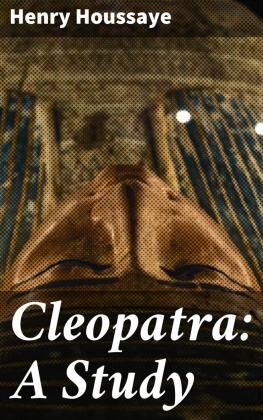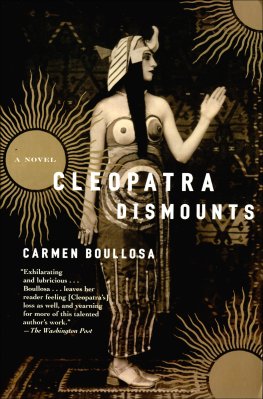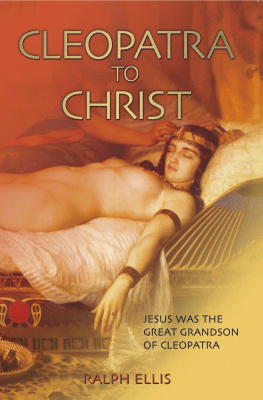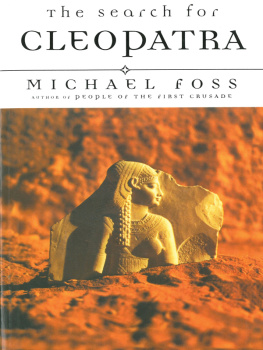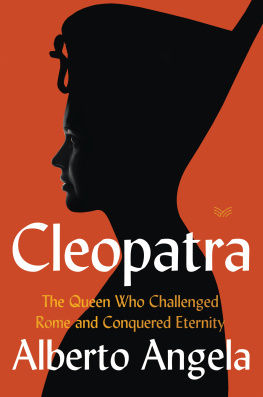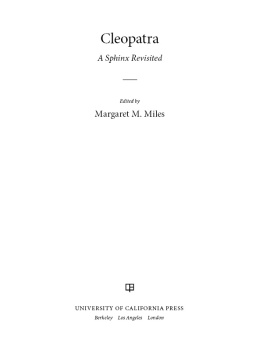CLEOPATRA.
I.
A
After an existence of forty or fifty centuries, the empire of Egypt was expiring under the evil eye of the Romans. The Greek dynasty, which had given to the country a new strength and reviving brilliancy, had exhausted itself in debauchery, crimes, and civil wars. It was now sustained only by the good-will of Rome, whose fatal protection was bought at a high price, and who still designed to tolerate, for a time, at least, the independence of Egypt. Freed from nearly all military service by the introduction of Hellenic and Gallic mercenaries the Egyptians had lost their warlike habits. They had suffered so many invasions and submitted to so many foreign dominations that all that remained for patriotism was the religion of their ancestors. Little mattered it to them, born servile and used to despotism, whether they were governed by a Greek king or a Roman pro-consulthey would give not an ear of corn less, nor receive a blow the more.
Her glory eclipsed and her power decayed, Egypt still possessed her marvelous wealth. Agriculture, manufactures, and commerce poured into Alexandria a triple wave of gold. Egypt had erewhile supplied Greece and Asia Minor with corn; it remained the inexhaustible granery of the Mediterranean basin. But the fertile valley of the Nileso fertile, says Herodotus, that there was no need of the plough, produced not corn only. Barley, maize, flax, cotton, indigo, the papyrus, henna, with which the women tinted their finger nails, clover sufficient for countless herds of cattle and sheep, onions and radishes, supplied to the laborers employed in building the great pyramid of Cheops to the amount of eight millions of drachms, grapes, dates, figs, and that delicious fruit of the lotus, which, according to Homer, made one forget his native land, were other sources of wealth. Native industry produced paper, furniture of wood, ivory, and metal; weapons, carpets, mats, fabrics of linen, wool, and silk; cloths, embroidered and painted; glazed pottery, glass-ware, vases of bronze and alabaster, enamels, jewels of gold and settings of gems. Finally commerce, which had its factories beyond the Aromatic Cape, which sent its caravans across Arabia and the Lybian Desert, and whose countless ships ploughed the seas from the Pillars of Hercules to the mouth of the Indus, had made Alexandria the emporium of the three continents. Under Ptolemy XI., the father of Cleopatra, the taxes, tithes, import and export duties cast annually into the royal treasury twelve thousand five hundred talentssixty-eight millions of francs.
The capital of the Ptolemies, Alexandria, made Achilles Tatius exclaim, We are conquered, and the probability is that he saw this city only after the ruin of many of its fine edifices. But what at all times was most striking to the stranger was less the number and magnificence of the buildings than the noble order and symmetrical arrangement of the city. Two great avenues, bordered with colonnades of marble and crossing at right angles, traverse Alexandriathe longitudinal avenue, more than thirty stadia (four thousand eight hundred meters) in length, and thirty-five meters in width, ran from east to west, beginning at the gate of the Necropolis and terminating at the Canopic gate. The transverse avenue extended for a length of seventeen stadia, from the southern enclosure to the great port. All the other streets and avenues, alike paved with heavy blocks of stone and provided with sidewalks, all crossing at right angles, met the two chief thoroughfares. This regularity, this noble appearance, and endless perspectives gave to Alexandria a character peculiar to itself. One felt that, unlike other cities which grow by degrees, by successive additions, Alexandria had been created at one stroke, on a fixed plan; and in truth this city had, so to speak, risen from the sand at the will of Alexander. It was Alexander who determined the position of the city; it was Alexander who had given it the form of the Macedonian chlamys; it was Alexander who, with his architect Dinarchus, had traced this network of streets and avenues, marked out the dykes to be raised for the new port, and appointed the sites for the principal edifices. Afterwards the Ptolemies adorned the city; they built innumerable monuments, created wonderful gardens; populous suburbs arose, both east and west; but as a whole Alexandria remained as it was conceived by Alexander.
It was from the Paneum, an artificial elevation in the heart of the city thirty-five meters in height, that a complete panorama of Alexandria could be seen. On the south, thousands of houses and private palaces stretched away to the circumference which, owing to the perspective, seemed to bathe in the shining waters of Lake Maratis. Humble cottages, rough-coated with lime, pierced irregularly with little windows, having wooden gratings, and terraced roofs surrounded by ventilators, serving as sleeping-places in the hot summer nights, alternated with vast residences rising amidst courts and gardens, concealing from the view of the outside world by lofty walls, turreted like ramparts, their white faades and sculptured porticos with rows of painted columns and cornices decorated with many colored bands. The grand Serapium overlooked this whole portion. This colossal edifice was reached by a winding staircase of a hundred steps; columns of syenite of the Corinthian order, thirty-two meters in height, supported the cupola.
Looking towards the sea the view embraced the northern portions, the old port and the new separated from each other by a gigantic mole seven stadia in extent which united the island of Pharos with the city. At the eastern extremity of this island rose the lighthouse, an immense octagon tower of two stories, one hundred and eleven meters in height, and built wholly of white marble. Around the vast port, from Cape Lochias to the Heptastadium, extended a noble line of piers along which arose palaces and temples. Edifices of pure Greek style stood side by side with Egyptian buildings and other magnificent ones in which both styles of architecture had combined their elements, relieving the utter plainness of Semitic art by ornaments of the Hellenic order, alternating Corinthian columns with campaniform, and uniting the acanthus leaf with the papyrus flower. Perspectives of cloisters ended in apses of marble exedr; at the extremity of long avenues of sphinxes gigantic pylons raised their pyramidal masses, where painted on white screens filed on processions of figures, and the entablature of which bore the emblematic disk with the great wings unfolded. Here a Greek temple presented a pediment sculptured in Parian marble; there an Egyptian temple, vast, squat, mysterious, showed its granite mass whose quadrangular pillars bore on the four faces of their cubic capitals the head of the god Hathor. On terraces covered with beds of roses, and shaded by sycamores, mimosas, and palms, rose palaces surrounded by porticos supported by columns of lotus form, alleys of pylons, pavilions in the form of conic towers, open kiosks, tribunes supported by caryatides. In the squares, at the junction of the streets, before the great edifices arose sculptured heads of Mercury, Osirian colossi, statues of the Greek gods, altars, heroums, dominated at intervals by lofty obelisks and tall masts fixed in the ground whose many colored flags fluttered in the breeze.



